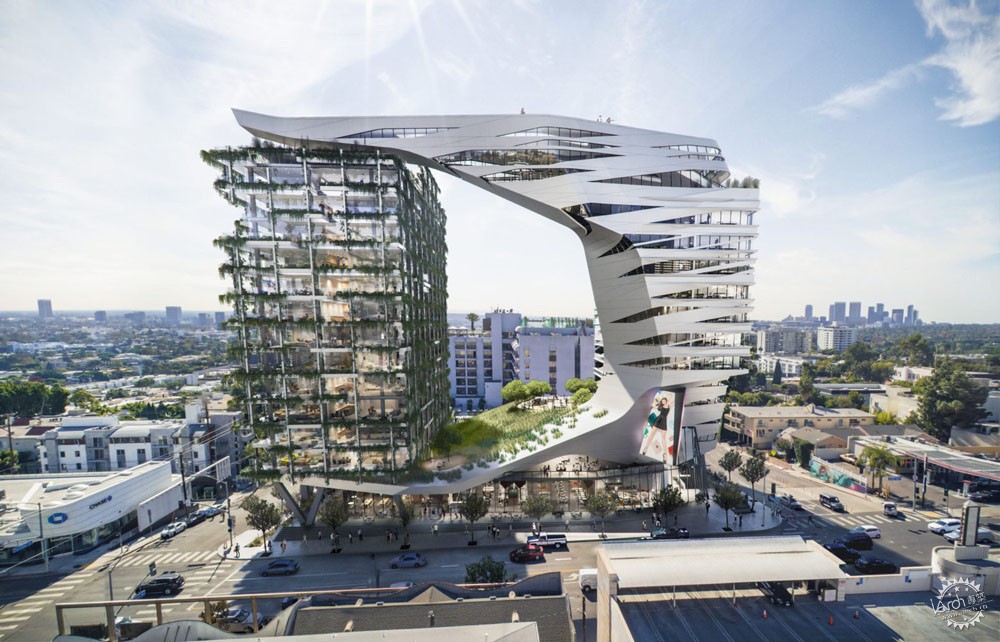
“我们公司充满了可能性”
“We’re a Possibilities Company”: Keely Colcleugh on Communicating the Future of the Built Environment
由专筑网李韧,王雪纯编译
建筑由故事而定义。通过表达想法与可视化交流,我们创造出了新环境。Keely Colcleugh是一名经过专业训练的建筑师,在建筑、平面、电影、可视化领域有着丰富的经验。在2009年,她成立了Kilograph事务所,将领先的可视化技术和动画、交互设计、平面设计、品牌设计结合在一起。现在,Keely是一家迅速发展的创意事务所的CEO,该事务所在洛杉矶和西班牙都开有工作室。
Keely接受了ArchDaily的访问,她说到了她对于交流设计的转型,以及对于洛杉矶的热爱,还有视觉艺术的发展。
Architecture is defined by stories. It’s through visualization and communication of ideas that we construct new environments. Trained as an architect, Keely Colcleugh is a designer with a range of experience across the fields of architecture, graphic design, film, and visualization. In 2009, she founded Kilograph with a desire to combine leading edge visualization techniques with animation, interactive design, graphics, and branding. Now Keely is the CEO of a growing creative agency with offices in Los Angeles and Spain.
In an exclusive interview with ArchDaily, Keely talks about her transition to communication design, her love for Los Angeles, and how the art of visualization continues to evolve.
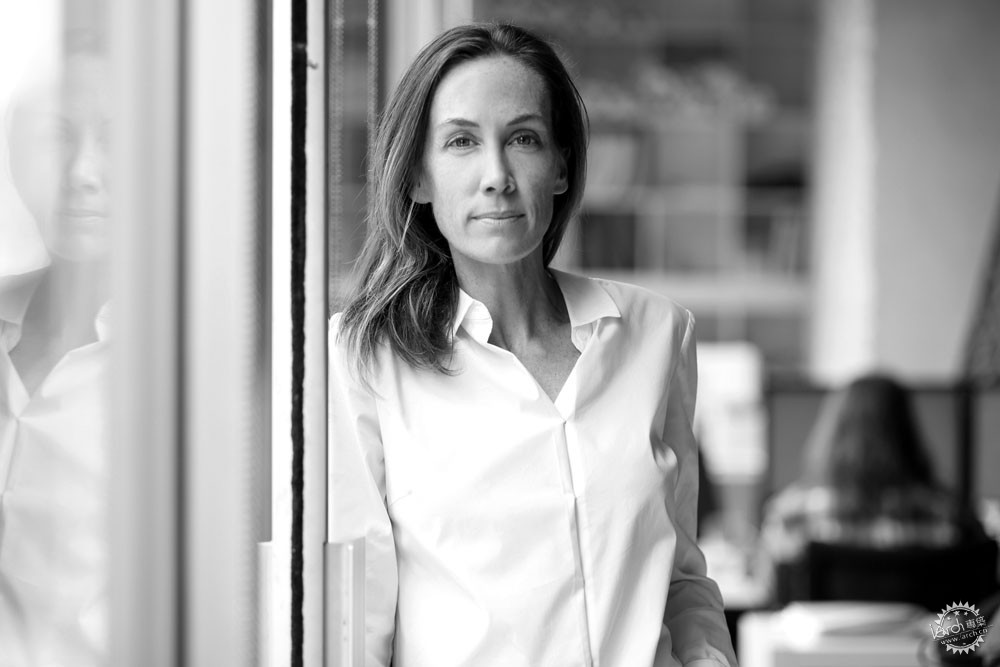
EB:能否谈谈Kilograph的诞生?
KC:2009年我们开始做建筑效果图,在当时,很少人在做这件事,所以我们几乎垄断了市场。随着技术不断进步,市场也不断扩大,我们逐步开始关注到自己擅长且喜欢的事。无论公共基础设施还是建筑竞赛,我们都更关注项目的整个沟通周期,就像是在讲故事一样,告诉人们建筑的样子。
近期,我们更改了公司的品牌和核心理念。我们对于未来的发展持有乐观的态度。在洛杉矶,这种感觉独一无二。在视觉效果圈子里,洛杉矶的未来趋势都很反乌托邦。在建筑视觉化艺术家圈子里,在选择未来的表达方式时,他们也会变得反乌托邦。我们总是一片蓝天。
EB: Can you tell us how Kilograph came about?
KC: We started in 2009 just doing architectural renderings. Around that time there really wasn't anyone else here doing that. So we had a bit of a captive market. And as technology progressed and the market expanded, we've begun to focus on what we do best and what we enjoy. We work on the entire communication cycle of a project, whether it's a public infrastructure project or an architectural competition, to tell stories about what buildings are going to look like, in the most engaging way possible.
We recently went through a process of rebranding the company and our mission statement. It became really clear that we have a very optimistic view of the future of the built environment. In Los Angeles, this is kind of unique. In the visual effects community, all views of L.A.'s future tend to be very dystopic. And even amongst architectural visualization artists, when given the choice of how to represent the future, they go dystopian. We are always blue skies.
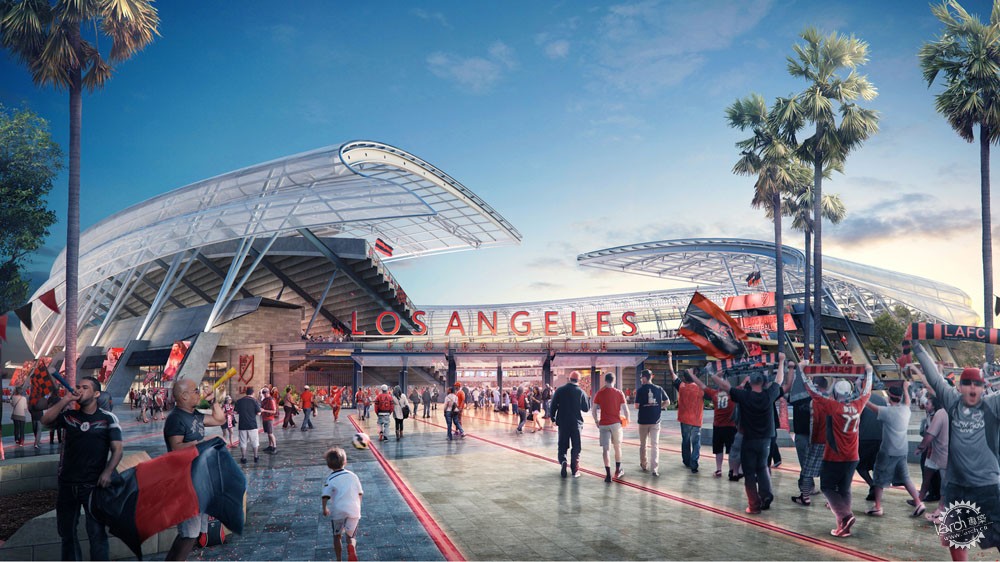
EB:对于你的作品,你是否有特定的方式?
KC:我们不喜欢使用模板。我们相信,在研究与开发的过程中能产生新想法。因此我们会不断地尝试新东西。我们不是某个领域的领军人物,但我们肯定是第一个吃螃蟹的人。这让我们的公司充满了可能性。
我们的工作比较注重实时渲染。每件事都朝向VR或者AR的方向发展,因为这种方法相比起其他传统策略,能够更好地表达空间感受。但是每个客户都不相同,因此我们会为特定的客户进行作品的量身定制,其表达方式可能是电影、动画、图片、沉浸式体验,或是其他好的表达方式。我们相信,这些要素的整合对于一个品牌来说,能够让其更快地发展,这一点,是那些快餐项目所无法匹及的。
EB:你的客户范围很广,不只是建筑师,对吗?
KC:是的,我们很高兴能与新能源技术、移动技术、房地产开发等项目进行合作。但是我们也仍然关注建筑。我觉得这个领域很有趣。其中的发展契机在于3D技术的多元化发展。VR、AR等技术不仅仅只应用在一个领域,因此如果有公司想要进行此类项目时,就会找我们,特别是洛杉矶的公司。
EB: And do you have a specific approach to your work?
KC: We really feel negatively about things like templates and using a cookie cutter approach, even for efficiency’s sake. We believe there's something in research and development that can yield new ideas. And so we are constantly trying new things. It might mean that we're not the masters in one particular area, but we are definitely the first people to try things. That really makes us a possibilities company, and that's what we're calling ourselves now.
Our services increasingly focus on real-time rendering. Everything is evolving towards VR/AR, as they can communicate the potential of space and scale at a higher level than anything else right now. Since every client is different, we try to suggest options tailored for specific goals, which could mean film, animation, stills, immersive, or really whatever makes the most sense for a particular audience. We believe that the integration of all of these elements does more for the brand/marketing of a property than a quick project ever could.
EB: And you’re working with a range of clients, not just architects?
KC: Yes! We are excited to showcase competencies in areas like the visualization of new energy technologies, mobility, and real estate development. But we're also continuing to stay focused on architecture. I think that it’s an interesting space to stay in. One of the reasons we are seeing more growth is because 3D is expanding into more industries. The desire for VR, AR, and other types of visualizations isn’t limited to one sector, so when companies go looking for a creative firm that can kind of do it all, they find us. Especially when they are looking for a firm in a major city like LA.
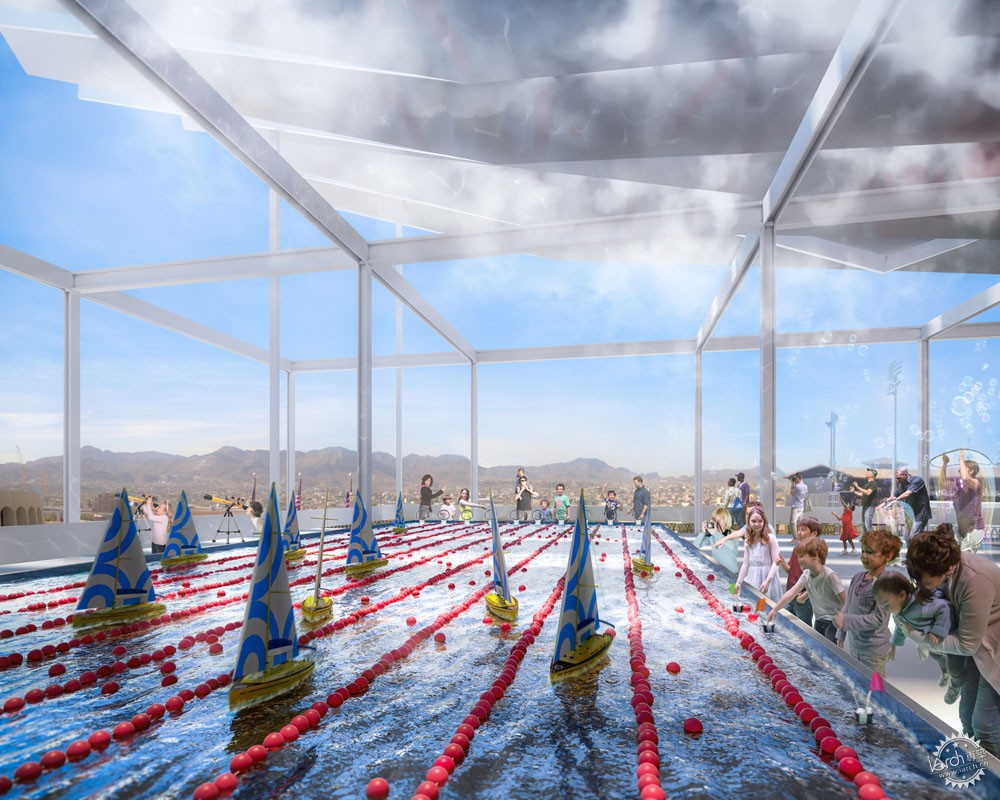
EB:你现在在做的项目中有哪些独一无二的特征呢?
KC:目前我们正在和Michael Graves工作室合作,我们会为一些未建成项目制作一些水彩插图。例如结合感官的设计方式,通过手指来创造世界,也可以通过不同的颜色来表达流畅的水彩效果。这是一种是沉浸式的有趣体验。
而其中的挑战也是要让人们沉浸其中。因此我们会和客户分享这些经验,这样可以不需要完全展示内容。这是我们接下来所面临的问题。
EB: Is there a unique project you’re working on now?
KC: Currently we're working with Michael Graves’s office on bringing to life some of the watercolor illustrations and drawings that the office did for projects that were never built. We're trying to use sensory input like a gesture-based motion to create the worlds and also flow through different shaders to achieve a fluid watercolor effect. That’s a fun zone for us to play in, these fully immersive, experiential designs.
The challenge is getting people in the headset. So we're looking at ways that we can share those experiences with clients without necessarily having to have them put on the display. And that's going to be the next kind of hurdle for us.
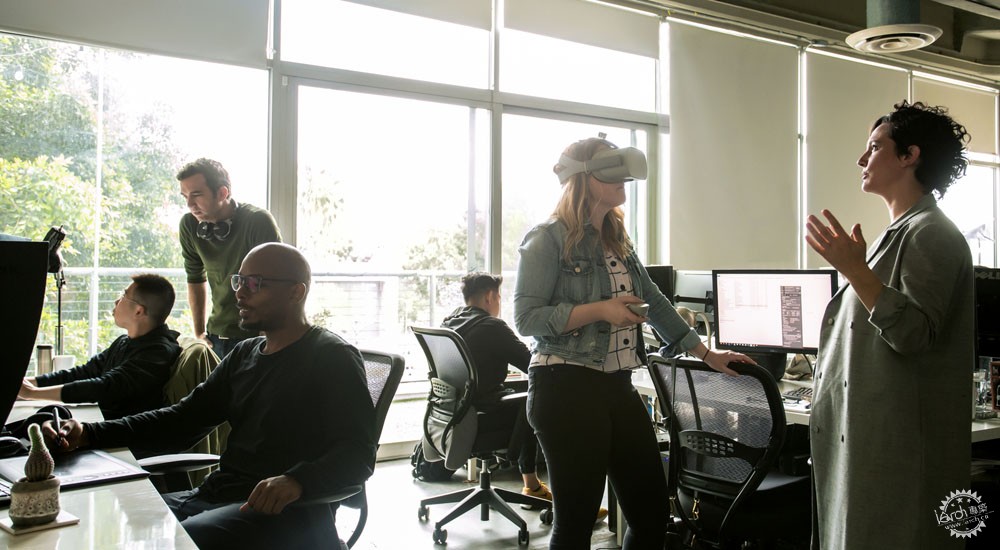
EB:通过VR技术,你是否采取了不同的策略展示给客户?
KC:对于建筑师而言,重要的是让各个专业的人员来共同解决问题,沟通设计思路、解决策略、做出设计方案等等。当你向人们展示空间时,你需要通过其他的技巧,比如视觉、听觉。我们会对客户进行引导,并且说明问题。如果你在讨论某件事,但是人们都看不见它,那这种感觉会显得混乱。
我们想要做的事情就是在虚拟空间中进行沟通。有的时候,为客户提供可视化体验是很多设计公司不愿接手的部分。但是这恰恰是我们所做的东西。我们始终都在考虑客户的感受,因为从品牌可视化进行入手会好一些。
EB: With virtual reality, do you take a different approach when presenting to clients or the community?
KC: For architects, it's more about getting all the stakeholders on the same page and solving problems. Communicating design vision, solving problems, making decisions quickly. When you're presenting an experience to the public, you need to employ other techniques like sound cues, or you need to be led through an experience. We do things like creating a host to take you through and point out things. Because if you're talking about something and people are not looking at it, suddenly it can be very confusing.
One of the things that we're really trying to push is communication in that virtual space. A lot of the times the user experience is the last thing that architectural visualization companies will think about. Whereas it's the first thing that we think about. And so we have a couple of people here doing UX design. We find it's always better when we start with the brand vision.
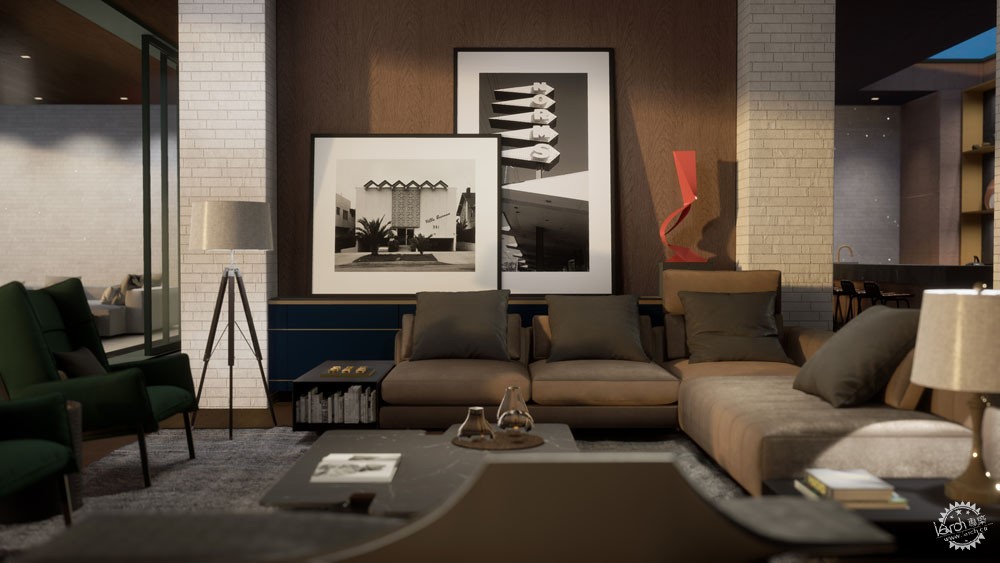
EB:那在现在的技术中,你有遇到什么障碍吗?
KC:对于大多数人来说虚拟现实本身和设备技术是个门槛。我们让门槛降低,将体验提供给所有人,人们通过手机或是其他设备,进行一定的沟通与交流。我认为,这需要清晰的策略,同时这也是品牌团队的着手点。我们定下这些目标,然后来打造体验。
EB:这么多项目下来,你仍然喜欢现实作品,是吗?
KC:是的。我们现在正在进行的项目是威士忌酒店,在每个房间都会有威士忌,这些模型也会建出来,到时候你就知道了。
EB:这听起来很对我的胃口。那么退一步说,我想知道你为什么对建筑领域这么感兴趣?
KC:嗯,好问题。我认为这是艺术和物理的结合。我就像是个孩子一样迷恋物理,在高中的时候,我就很喜欢物理。在高年级的时候,我就做了很多类似的工作,同时我也意识到我可能不会真正进行物理的研究。因此前景比较迷茫。这样看起来建筑更有意义一些,我也喜欢画画,它是其中的一部分。
EB: Could you talk a bit more about any barriers you have utilizing technology in your field?
KC: I think with virtual reality and the device itself there's a high intimidation factor with technology for most people. So it's about making the lowest barrier for entry. And that might be a good Cardboard experience that brings in their phone, or something else that slowly builds up the conversation. I think it’s also clarity of strategy or clarity of communication that needs to happen and that's where the branding team comes in. We take those goals and then create an accessible experience around them.
EB: You do a range of projects, but you still do photorealistic work, yes?
KC: Definitely. Right now we’re doing a project called the Whiskey Hotel. Every room will have whiskey in it, and it’s going to be built. You literally get a shot on arrival.
EB: Sounds like my kind of hotel! Stepping back a bit, I’m wondering why you were interested in majoring in architecture in the first place?
KC: That's a good question. I think it was an interesting mix of art and physics. I loved physics as a kid, and in high school it was my top subject. My junior year I did a lot of work in that department, and then I realized that I was probably not going to end up going into physics. There wasn't really much of a path that I could see. So architecture seemed to make sense. I loved sketching too, so that was part of it.

EB:所以你在McGill学习。那么你是否有什么特别的感受呢?
KC:我们今年才举办了20周年同学会。我遇到了许多同学,大家都很相似。在毕业时,我们看起来很不一样,但是我们大多数人都仍然在建筑行业。我只是少数转行的人。但是确实有一些不同,因为当时没有数字工具。你所做的每一件事都有积极的表现方式。我认为这是项目背后所代表的想法。
EB: So you went to study at McGill. Was there something specific to that experience that really stuck with you?
KC: We just had a 20 year anniversary this year. I met all my classmates and we are all unbelievably similar. When we graduated we seemed very different, but most of us have stayed in architecture. I was one of the few who left. But there was definitely something about that moment, because there were no digital tools. But there was an aggressive representation approach with everything you did. I think that got us all thinking about representation and the ideas behind a project.
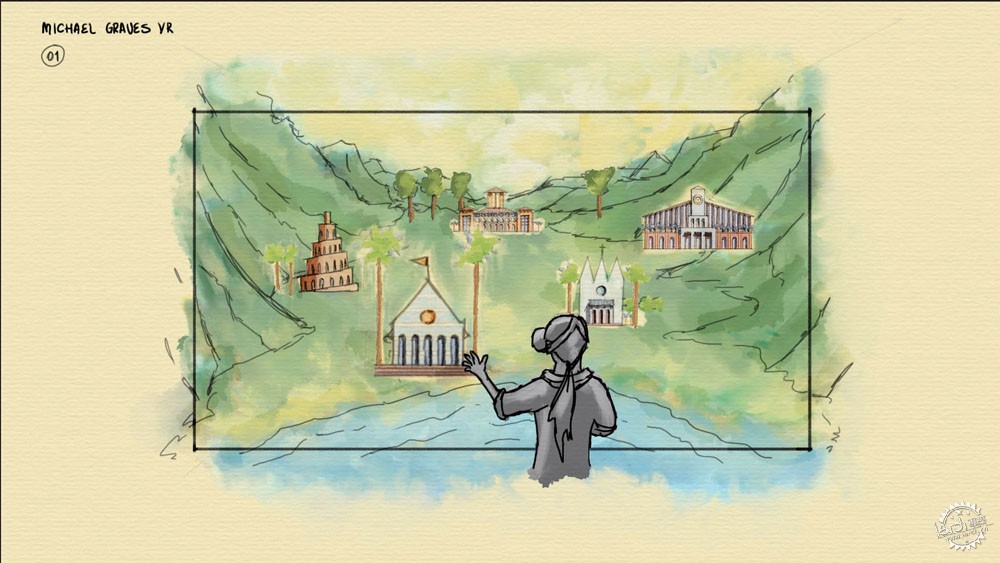
EB:你曾就职于OMA、AMO、Bruce Mau,以及SOM。你承担过许多不同的工作,那么这些工作给你带来了什么?在这之间你怎么过渡?
KC:在我上学的时候我就很喜欢表达。我甚至也会帮其他人表达他的想法。我不知道我是否是个好建筑师,但是我的表达总是如此。我在OMA的时候,我就处在这样的任务中,我不断地展示各种东西。因为每个东西都需要简洁明了地递交给Rem,因为他的时间并不充裕。如果你有一个问题,你就要把各种可能性和想法列出来,然后尽量简介地表达你的想法。
然后,我和Bruce Mau合作。我渐渐清楚认识到,在交流设计中表达想法是种在哪里都需要的技术。一个人很难说一辈子会做什么,但是我会不断地尝试,而这件事我也很喜欢。
EB: You’ve worked at offices like OMA, AMO, Bruce Mau, and SOM. You’ve taken on many different roles, and I’m wondering what those experiences gave to you and how you made the leap from one thing to another?
KC: From the beginning on the first day of school, my interest was the presentation. I would even work with other people on their presentations. I don't know if I was a good architect, but my presentations were always like the thing. So when I went to OMA, I was in this world where everything was presentation. Everything had to be presented in such a clear and concise way to Rem, as he only had so much time. If you had a question you had to come with a hundred pages of what he asked for, your idea, and a second idea. You had to sit with him and flip through it. You did everything you could to express your idea quickly.
After a while I had the chance to work with Bruce Mau. Eventually, it became really clear that I needed to try legitimately being in communication design, because it seemed like this is where everything was going. It is very hard to leave something that you thought you were going to do your whole life. But I tried it, and I absolutely loved it.
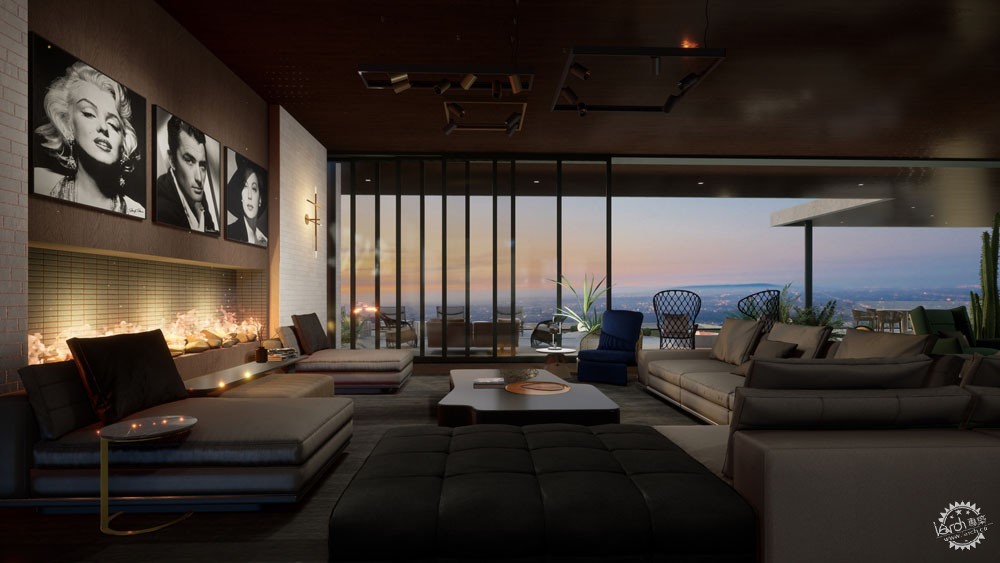
EB:那么你是如何转向可视化呢?
KC:我认为这与技术有关,我不断地进行新测试,也不断地发现新可能。在多伦多,我看过一篇文章,这家建筑公司在领先的电影制作中应用了建筑模型软件与技术,而这就是“预备级可视化”。我后来看过这部电影,这种感觉太好了,我和合作伙伴进行了联系,然后联系了正在进行这方面研究的专家。我飞去洛杉矶,真正了解并喜欢上了这种技术。然后我就开始这方面的工作,我真的很喜欢视觉技术与软件。
EB:那么洛杉矶对于你的工作有什么影响呢?
KC:洛杉矶是个临界点。这里有西方建筑,也有文化和历史,我也因此认为它会继续发展。我们在这里能够看到新技术和真正的乐观。关注进步,那么城市就会有好企业。对我们来说幸运的是,我们一直都在做重要的工作,因此很多时候,我们拓宽了城市视野。我们不断地思考,并且带入工作之中。
EB: So how did you make the switch to visualization?
KC: I think it came as technology evolved and as I experimented with new programs that opened up new realms of possibility. I remember reading an article in Toronto about a company of architects who were using architectural modeling software and techniques on leading edge film productions. It was called pre-visualization, and Minority Report had just come out. I watched the movie and it was awesome. I reached out my network, and they put me in touch with a couple of guys that were doing it. I flew to L.A. and I really fell in love with it. So I just dove right in and I really enjoyed working in visual effects and learning the software.
EB: How does being in Los Angeles shape your work?
KC: Los Angeles is the final frontier. It really is, for Western architecture, for culture. It's where things have historically happened and where I think they will continue to. We’re starting to see a real focus on new technologies and a real optimism. I can’t think of a better city to have a firm in when you’re interested in progress. We’re fortunate in that we are basically working on most major projects in LA right now, so in a lot of ways we are helping shape the way people view changes in the city. So we are constantly thinking about what LA is and will be in our work.
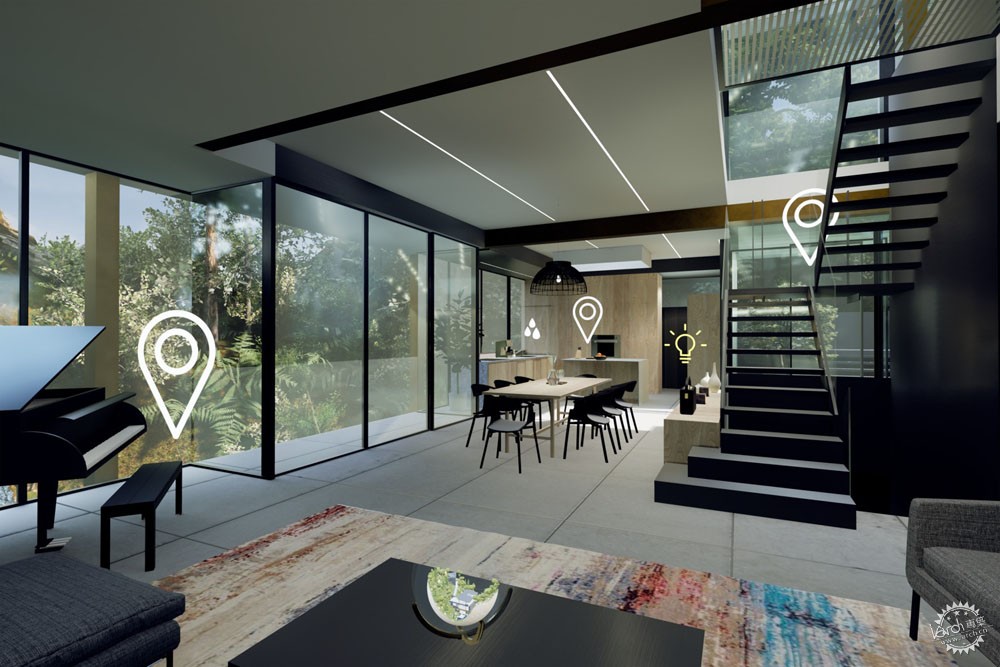
EB:在今天,手绘和数字表达之间仍然存有争议。在这二者之间是否有一条界限呢?
KC:我想这条界限已经消失了。我们已经达到了可以用电脑作为艺术媒介的时候了。这并不是涉及到对某个技术的依赖,而是对思想的变革。这只是个表达方式而已,并不是个问题。
EB:那你会扩大一些工作范围吗?还有哪些你想要研究的领域呢?
KC:我对虚拟现实很感兴趣。这也是我上学时的东西。在一开始,它就是为了空间而存在。那么,我们就又回到了关于建筑重要性的讨论。我很兴奋,因为它有巨大潜力。
EB: Even today, there is still a debate about hand drawing and digital representation. Do you feel like there is a line between the two or that the line is going away?
KC: I think it's completely done. I think as we reached a point where we are able to use computers as artistic mediums it doesn't matter. It's not a discussion of fidelity, it’s not a discussion of technology, it's discussion of ideas. A discussion of position. I don't think it's an issue anymore; it's simply expression.
EB: Could you expand on the scope of things that you work on here. Is there a particular piece of work that you really enjoy or that you want to explore more?
KC: I get really interested in the virtual reality work. And again it's probably a product of that time in history when I went through school. From the very beginning it was about the creation of space. And so it feels like we’re getting back to this fundamental idea of why architecture is important. I find that really invigorating and exciting. The potential there is just massive.
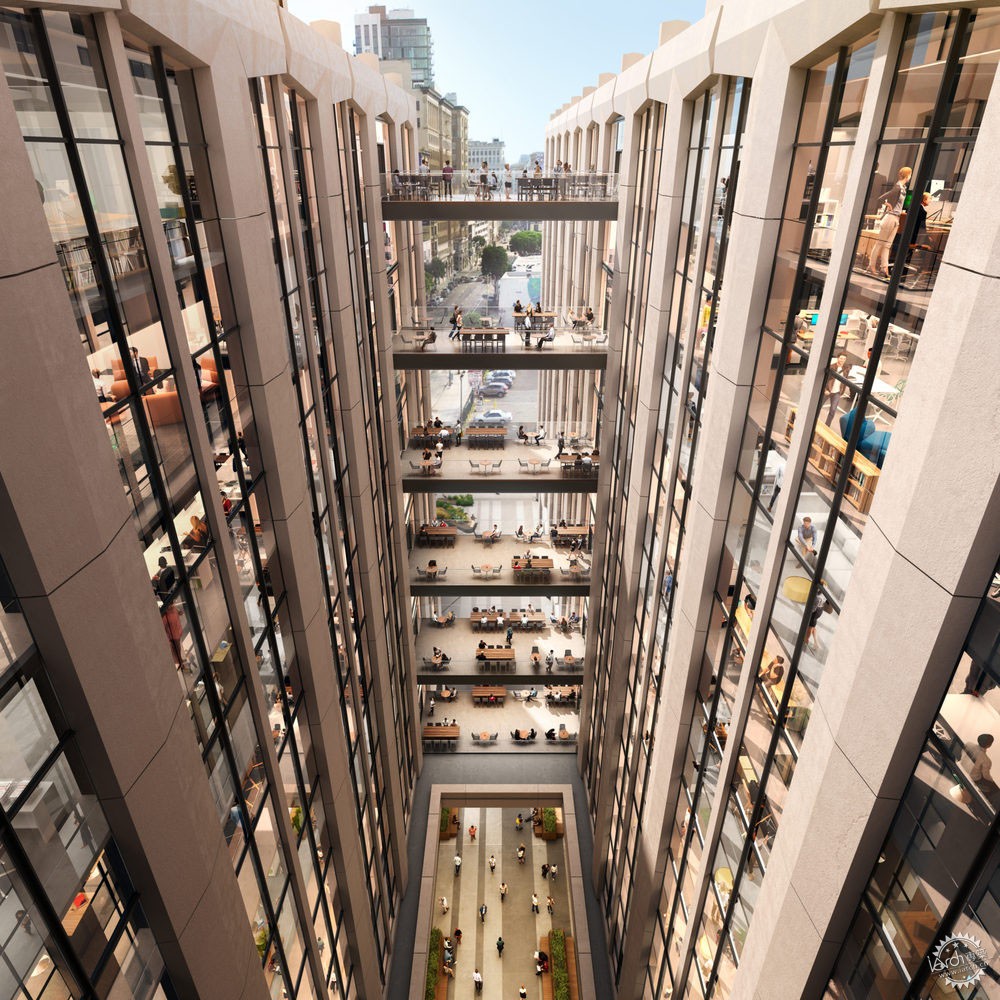
EB:你能说说工作室结构吗?在西班牙也有办公场所,那么团队如何设立呢?
KC:西班牙的工作室其实就是洛杉矶工作室的延续。随着我们不断发展,我们希望工作室都有自己的项目。我们并不是在筒仓里工作,工作人员都很有才能,我们的发展能力也和项目息息相关。所以整个工作室的结合十分有机,我们是加拿大人,我们也会努力地做到民主。
EB:你曾毕业后又回到学校学习,那是为什么呢?
KC:我辍学之后加入了OMA。在我完成第一个工作之后,就去了Rice研究生院。后来,在第一学期,一个朋友给我打电话说他们在鹿特丹需要一些人。她说Rem下个星期回去旧金山,你可以亲自去见见他。于是我也这么做了。在我走进咖啡店之后,我和他共进早餐,我也给他看了我的作品集。他说,“你想来鹿特丹工作吗?”我告诉他我还在上学,他说,“这对我来说没有吸引力。”
于是我辍学了。工作了之后,我觉得我想回学校,因为还有一些东西没有学到。SCI-Arc有着很好的项目,因此我发出了申请。
EB: Could you talk about your office structure? I know you mentioned you have a team in Spain. How are teams set up?
KC: Our team in Spain is really an extension of our team here. As we grow over there, the idea is that they will get their own projects. We don't really work in silos. Everyone is a bit of a generalist, and we upstream and downstream abilities depending on the project we’re working on. So it's a very organic office structure. Maybe it’s because we're Canadians and we're trying to be very democratic.
EB: At one point you went back to school at SCI-Arc. How did that come about?
KC: Well I dropped out of school to go and join OMA. I had gotten into grad school at Rice right after my first job experience. A friend of mine called me in the middle of my first semester and said they needed some people in Rotterdam. She said Rem’s going to be in San Francisco next week if you want to meet with him in person. And I literally did! I remember walking into this cafe and I had breakfast with him. I showed him my portfolio and he said, “so you want to come work in Rotterdam?” I told him I was still in school, and he responded, “the fact that you’re still in school is very unattractive to me.”
So I dropped out! I fully pulled out, and after working for a while, I felt like I wanted to go back to school and that there were things I’d left on the table. SCI-Arc had a great program, so I applied, and that’s where I went.
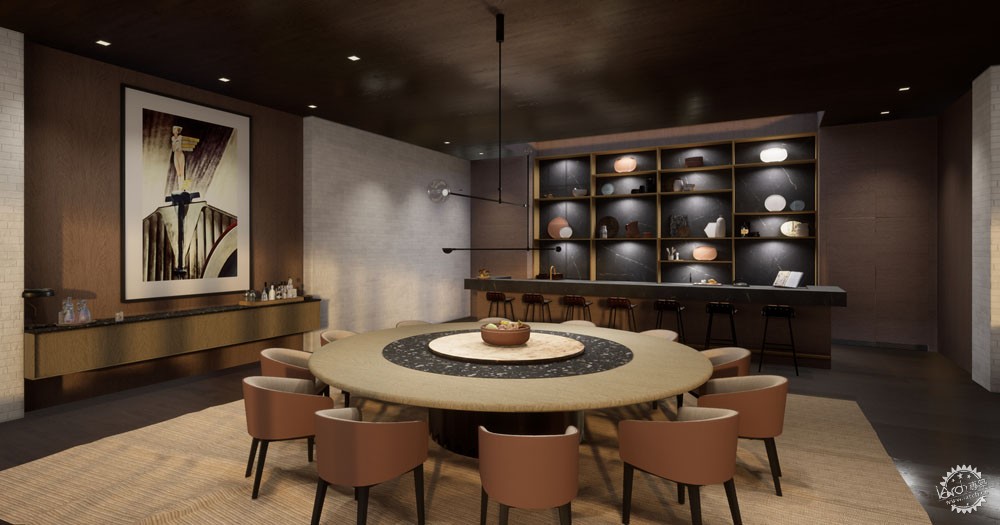
EB:那么你把洛杉矶称为故乡,你是否有喜欢的邻居呢?
KC:我一直很喜欢美国的卡尔弗城。我第一次来到这里,它就让我想起了一些地方。这里有着当地的历史,也有石油井架。我很喜欢洛杉矶的光怪陆离,你也可以在卡尔弗城找到这种感觉。
EB:你做了什么让Kilograph如此独特?
KC:创意吧。人们来到这里,是为了创意,所以我会给他们展示一些没见过的东西,或者带上他们的东西,帮助他们通过不同的媒介来塑造各种东西。我们有着不同类型的人才来达到这个目标,因此我们的员工不仅仅是建筑师和3D艺术家,我们以前还有游戏开发者、视觉效果艺术家、插画家、VR开发人员等等。这里是个大熔炉,和我们一起,没有什么不可能。
图片:Courtesy of Kilograph
EB: So you’ve come to call Los Angeles home. Do you have a favorite neighborhood?
KC: I've always enjoyed Culver City. From the first time I visited it made me think about the in-between areas. It’s this interesting mix with the legacy of Sony, the area’s history, and the oil derricks right there. There's something about the weirdness of L.A. that I love, and you can find it in Culver City.
EB: With everything that you take on, what makes Kilograph unique?
KC: Ideas. People come to us for creativity, because we’ll suggest something they haven’t seen before or take their property and help them shape it for a particular audience across mediums. We hire different types of people to achieve this, so our staff isn’t just architects and 3D artists – we’re also former game developers, visual effects artists, illustrators, VR devs, and more. It’s a true melting pot and it’s why we say that with us, anything is possible.
|
|
